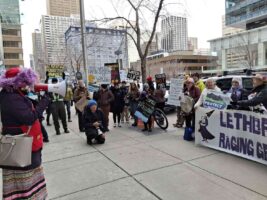The East Coast power system of Australia has the worst frequency regulation in the developed world.
This puts the system at risk whenever an event occurs which requires the generators to respond quickly – they can’t respond quickly if they have to wait for the system frequency to go outside its control system dead band.
It is like driving a car with a loose steering wheel, or more pertinently, with a loose brake pedal and accelerator pedal.
Everything will be fine if you are just cruising along and nothing happens, but if someone jumps out in front of you, that fraction of a second lost in applying the brakes because of “slop” in the braking system could be crucial.
In power systems the “slop” (i.e. a lack of response to changes in system frequency) makes the possibility of an unrecoverable generation/load mismatch just a bit more likely – possibly leading to a system-wide blackout.
How did we get to this situation?
Some clues as to what has been going on can be seen when comparing the mainland frequency with the frequency of Tasmania.
The two systems are connected together by a high voltage DC link (Basslink), so they don’t have to operate at the same frequency. However, the Basslink control system is set up so that power flows across the link are constantly updated to keep the frequencies of each of the systems tracking each other.
Obviously the mainland is much bigger than Tasmania so you would expect it to be setting the frequency which the Tasmanian system then follows. This is not what happens.
Consider what happens if the link were to be disconnected.
This happened in 2016 due to a cable fault, and counterintuitively the frequency regulation of Tasmania improved. The connection to the mainland makes the frequency regulation of Tasmanian system worse, not better, which is opposite to the original intent of the Basslink control system.
Tasmania is actually improving the frequency regulation of the mainland in general– a clear case of the tail wagging the dog if ever there was one.
When Tasmania was disconnected from the mainland two key observations were made. The frequency regulation of Tasmania improved (by quite a lot), and in absolute terms the frequency regulation of the mainland also slightly improved but in a way that made visible the dead band (or the “slop”) that exists in the mainland collective generator control systems.
The main land frequency control seems to be done by what is derisively known as “bang-bang” control.
For example, when the frequency gets too high: push it down. When it gets too low: pull it up. Anywhere in between – do nothing.
Effectively when the frequency is between nominated limits it is not controlled or to put it another way it is out of control.
If something happens on the system (e.g. a loss of generation event in a region as happened prior to the South Australian blackout) – it won’t respond until it is too late and the lights will go out. In the worst case scenario this could happen along the whole east coast of Australia.
So who or what is affecting the system frequency?
All that is needed to understand the basics of frequency regulation is as follows:
• To raise the system frequency – increase the dispatch of generator power output
• To lower the system frequency – do the opposite
The output of all generators on the system is logged by AEMO at four – second intervals which is sufficient resolution for monitoring frequency regulation. Whenever a generator or load changes its power output for whatever reason it will change the power system frequency.
It is relatively straightforward using signal processing techniques to see which generators are changing power output the most and hence affecting power system frequency.
The units on the mainland that we have observed which affect the frequency the most are the Snowy Hydro units at Tumut and Murray.
These have often been the units of choice in regulating system frequency, and with the exception of some isolated events, such as large generator trips, or rapid changes in large thermal generator output – these are the units that affect the frequency the most.
In particular the impact of renewable generation currently connected to the system on system frequency is virtually insignificant.
This is not a surprise; currently the capacity of renewable generation is less than about 15% of the total system generation and is spread out amongst a huge number of individual generators which never change power dispatch in unison.
Statistically renewable generation cannot and does not significantly impact the overall power system frequency.
That is not to say this will not become a problem in the future, but right now in 2018, the frequency is being impacted on by the traditional units and we can easily see this in the 4 second data.
Frequency Control Ancillary Services Market (FCAS)
The NEM has several markets which are meant to control system frequency. I think it is not a coincidence that the systems which have the worst frequency control are the ones that also have ancillary services markets.
The Australian and UK power systems exhibit the worst control over system frequency probably because of their respective ancillary services markets rather than despite it, even though the details of each country’s market are quite different.
In 2017, the Australian NEM recorded more than $200 million dollars in frequency control ancillary services payments. This seems to be a lot of money redistributed amongst various market participants in order to provide the poorest frequency control in the developed world.
We have analysed some of the payment and recovery records which are publicly available and can report the following:
• There appears to be no correlation between frequency control and the volume of ancillary service payments.
• There appears to be no correlation between frequency control and the various FCAS market prices.
• There appears to be no correlation between the volume or price of frequency control ancillary payments and any events on the system which cause frequency deviations.
• There is no correlation between the volume or price of FCAS payments and the actual cost of providing frequency control services.
In summary the term “frequency control” appears to be a misnomer, at best the ancillary services market operated in the NEM could be termed a “generation dispatch balancing market” which assists in balancing what the dispatch engine requests generators to output and with what the system actually requires.
This latter service might be useful in operating a real time market which imperfectly dispatches power, but it has little or nothing to do with system frequency control. We are sowing seeds of confusion by naming it “Frequency control ancillary services”.
The term “causer pays” is equally misleading. Generators which don’t quite meet their generation dispatch targets may well be doing so because they are responding in real time to local system frequency conditions.
Under current arrangements they could be penalized for having good frequency control governor systems. It is irrational to penalize units which support frequency control and reward units which don’t but this is what the market appears to be doing.
If allowed to continue this course will ultimately lead to a system which goes out of control and results in a system wide blackout.
So what to do?
Do we redesign the market? Make it more focussed on control of frequency rather than merely balancing dispatch, via time error set point control? I personally don’t believe that will solve the issue.
The market has been in operation for nearly two decades and it appears no one has cast a critical eye on its workings until recently. Alarmingly, the control of frequency has gradually deteriorated in the meantime to the extent that it is becoming a threat to power system security. Who is to say a newly designed market will not also exhibit unforeseen pathologies?
Another approach is to recognise that frequency control is a technical not a market function.
The requirement for good system frequency control is essential for system security. I am of the opinion that ensuring good control systems are installed on the system and in good working order should not be left to the whims of a poorly designed market.









